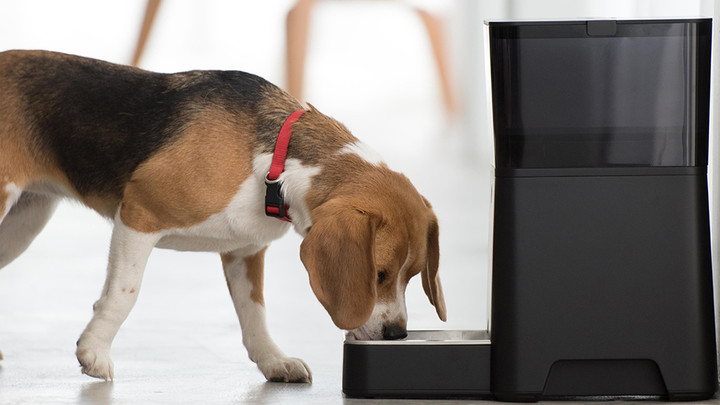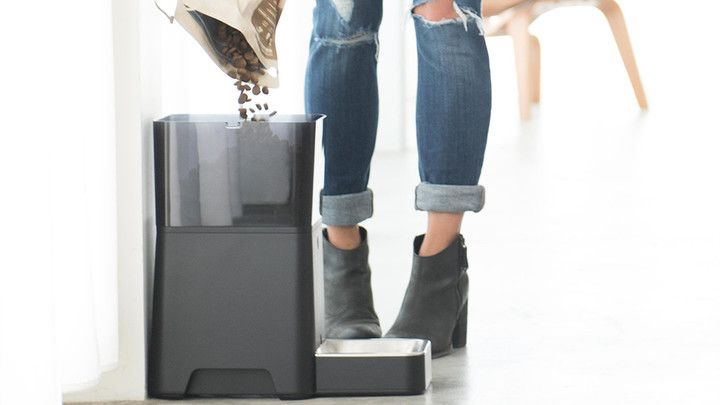Smart-home devices sometimes require complicated installation that just doesn’t make sense for renters. Plus, apartments have different needs than single-family homes. That’s why we decided to outfit a whole condo with smart devices that don’t require rewiring or permanent installation. Each week, we’ll tackle a different category and look at various products, then explain how we made our selections. At the end of the series, we’ll examine the smart apartment as an ecosystem, and how all these devices — or do not — work together.
If I had to describe the smart home today, the word I’d use is disjointed. It’s hard to find a product in every category that has all the features you want — not one guaranteed to work with the devices you already own, anyway. In fact, there are a lot of devices that don’t fit in the typical categories that spring to mind when you think of the smart home: lights, locks, security cameras, and so on. But from smart toasters to connected alarm clocks to Wi-Fi-enabled trash cans, the enormous “miscellaneous” category is a catch-all for any home device that can connect to the internet.
Type smart fill-in-the-blank into Google and chances are there’s a Kickstarter for it.
And make no mistake, if you type smart fill-in-the-blank-with-any-crazy-idea-you-can-think-of into Google, chances are good there’s been a Kickstarter for it.
For the seventh installment in our Digital Trends Smart Apartment series, I decided to take a look at some of these one-off devices that don’t necessarily sync with my Wink hub or help make any tasks easier. Some are fun, others are actually useful. Hopefully none will get me hacked. That is a concern with some devices; if they aren’t coming from a known company, it’s hard to know their track record on security. That may not dissuade you from picking up the latest gadget, but it is something to think about.
With that said, I decided to try out four smart-home devices that are perfect for apartment dwellers, because they can easily fit in a moving van.
Snooze in a smart bed
For a few hundred dollars more than other mattresses-in-a-box, you can get a SleepNumber It Bed, which is embedded with sensors. While it can sync with an activity tracker you wear on your wrist, the idea is that lying on top of a bunch of sensors that track your breathing, heart rate, and movement will be much better at determining how you’re sleeping than a watch will.
With sheets on, it’s hard to tell what’s smart about the It Bed. It hides its tech — including an air pump that lets you adjust the mattress’s firmness — inside the covering. You’ll never see the sensors, of course, and aside from a plug, there isn’t a lot to signal it’s anything but an ordinary mattress when the pump is tucked away in its pouch at the foot of the bed.
Everything is handled on the SleepNumber app, which lets you adjust the firmness, tells you how well you’ve been sleeping via a daily “score,” and reminds you to start getting ready for bed at a reasonable time each night. I found the app doesn’t get things right 100 percent of the time; sometimes it will give my husband’s sleep score, but not mine. Sometimes it’s the other way around.
After you’ve been sleeping on the mattress for a while, it starts to get you know you.
After you’ve been sleeping on the mattress for a while, it starts to get you know you — especially if you sync it with your Fitbit and tell the app all kinds of personal details, like what you eat, how much you drink, and so on. It starts to give you personalized recommendations based on this information, but it’s just advice. For example, if it tells you what temperature you sleep best at because it’s communicating with your Nest thermostat, it won’t tell that device to lower the temperature a few degrees. It won’t adjust the firmness by itself, either. It’s taking your data and giving you data in return, but it’s not reacting. SleepNumber actually addressed this with its upcoming, sure-to-be-expensive 360 bed, which stops people from snoring and warms up your toes when it’s time for bed.
Still, it’s a pretty comfortable mattress, and while I do ignore those “time for bed” alerts the bed sends me nightly, at least I get concrete feedback on how doing so affected my sleep the next morning.
Get some herbs
Gardening is difficult for apartment dwellers, but a recent glut of indoor gardens makes things a little simpler. I do not have a green thumb. I’ve never owned a plant; I’m pretty sure anyone who knows me realizes I would probably kill any gift greenery and has thus not burdened me by gifting me with it. That’s why I wanted to try the Smart Herb Garden by Click and Grow, which bills itself as a foolproof way to grow herbs and other plants. The Garden comes with three basil capsules, so you can start growing right away. Almost everything needed to start sprouting is contained within the capsule, so you just add water and plug the garden in. Add water every two weeks (you’ll get a reminder), and consult the app for tips and tricks. You’ll see little buds after a week or two and can start harvesting in about three months.
The one word of caution here is be careful where you place this sucker. Click and Grow recommends plugging it in for the first time right when you wake up, and with good reason. The LED light is bright. I keep mine in a closet in the office, because it can be dazzling. Because the light cycle is 16 hours on, eight off, even if you plug it in at 8:00 a.m., the light will stay on until you’re ready for bed. If you live in a studio, it might be hard to find a good place for it.
Framed
Artistic taste aside, the Memento is ridiculously expensive.
The beauty of digital frames is that you never have to get bored with what’s hanging on your walls. The Memento Smart Frame is app-enabled, so you can put up whatever pics you have on your phone, including those you downloaded from the internet.
Its 35-inch, 4K display is surrounded by a matte to make it a bit like a traditional picture frame, but that’s pretty much where the similarities end. You can create different “albums” for it to cycle through, changing them every minute or more or less frequently. You can also adjust the contrast, saturation, and so on of your display. You can schedule it turn on and off at the same time every day or have it on longer during the weekends. It’s meant to be hung on the wall, which means there will be a cord hanging down and it needs to be situated near a plug. Memento does sell a kit to help you hide the cord a bit, but it requires painting.
The Smart Frame stores up to 3,000 photos. I chose some cool-looking science photos I found online. At least, I thought they were cool. When my husband came home and saw them, he suggested they look like the backgrounds of motivational posters and should be emblazoned with words like “Persevere!”
Artistic taste aside, the Memento is ridiculously expensive. You could always just have your photos cycle through on your smart TV instead…
Nomnoms
There are a ridiculous number of smart pet devices on our planet right meow – sorry, right now. My cat will not stand for a collar at any time, but he loves to eat. Thus, I thought I’d try out the Petnet Smartfeeder on him. It’s an automatic feeder that also has an app that gives you a bit of insight into what’s going on with your furry housemate.
More: Petzi Treat Cam review
The thing with the Smartfeeder is that it needs to be plugged in. My little cat nook — aka, the place I put his food and water bowls — doesn’t have an outlet, so I had to find a new place. My cat didn’t really seem to appreciate this move, and though he regarded the machine curiously when it spit out food the first time, he didn’t approach it. It makes a kind of whirring sound typical of automatic feeders, which doesn’t seem to hold the same allure as me shaking his bag of food. To get him to investigate, I dropped some treats in the feeder’s bowl, and he seemed fine with it. He still seems to prefer his plain old stainless steel bowl, though.
The app lets you set scheduled feeding times and gives a recommendation for the amount based on your pet’s age, weight, and activity level. To me, this doesn’t seem like an exact science, as my cat is part Maine Coon, and they’re big. Twelve pounds might sound like a lot, but he wears it well. The app also seemed to shame me with my pet food choice; the “Food Report Card” showed a few red circles indicating the fairly pricey kibbles are deficient in protein and fat, and they also contain filler ingredients and artificial colors. Sorry, kitty!
Petnet had a server outage left year that left some pets hungry. It’s definitely not something I would trust if I was leaving the cat alone for more than a day. In fact, I’m supposed to get alerts when the device doles out food twice a day, but I found this wasn’t always reliable. When I scrolled back to yesterday, for example, it said it had only delivered a single feeding. I think this is because the feeder drops food directly down, meaning the nibblets tend to stay crowded in the back where it’s hard for him to reach.
I like the idea of having a reliable machine that can always deliver my cat his food at 6:00 p.m. on the dot, so hopefully updates will make the Petnet more trustworthy in the future.
More smart stuff?
My experience with all these devices has been far from perfect, but that doesn’t mean I’m not curious about adding, say, a smart alarm clock into the mix. Heck, I want to try out Simplehuman’s voice-activated trash can when it comes out. Smaller companies are coming up with some of the most innovative solutions, but it might take a while before their software and hardware work together perfectly, 100 percent of the time. I guess a smarter apartment isn’t necessarily the smartest apartment.










